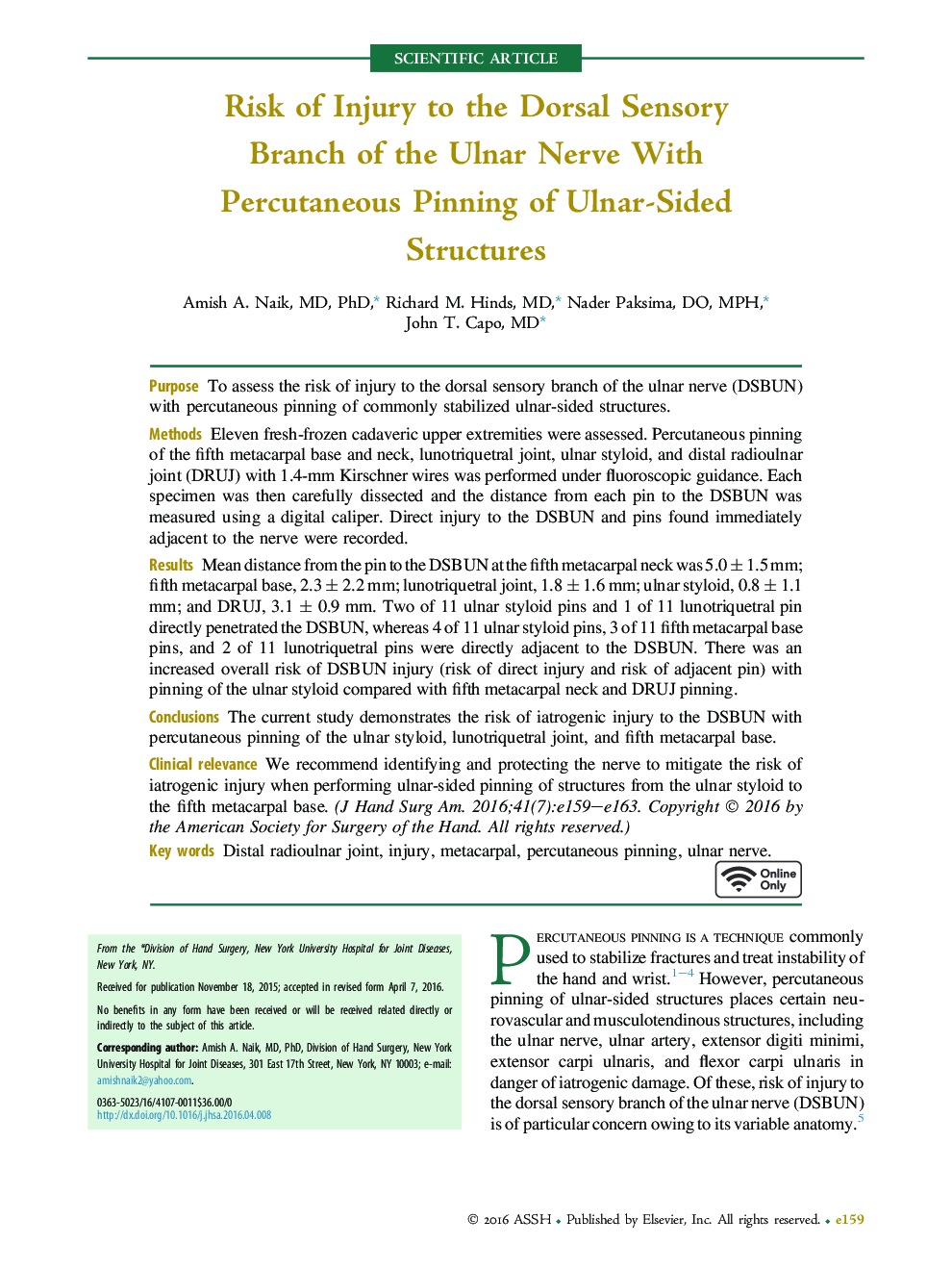| Article ID | Journal | Published Year | Pages | File Type |
|---|---|---|---|---|
| 4066040 | The Journal of Hand Surgery | 2016 | 5 Pages |
PurposeTo assess the risk of injury to the dorsal sensory branch of the ulnar nerve (DSBUN) with percutaneous pinning of commonly stabilized ulnar-sided structures.MethodsEleven fresh-frozen cadaveric upper extremities were assessed. Percutaneous pinning of the fifth metacarpal base and neck, lunotriquetral joint, ulnar styloid, and distal radioulnar joint (DRUJ) with 1.4-mm Kirschner wires was performed under fluoroscopic guidance. Each specimen was then carefully dissected and the distance from each pin to the DSBUN was measured using a digital caliper. Direct injury to the DSBUN and pins found immediately adjacent to the nerve were recorded.ResultsMean distance from the pin to the DSBUN at the fifth metacarpal neck was 5.0 ± 1.5 mm; fifth metacarpal base, 2.3 ± 2.2 mm; lunotriquetral joint, 1.8 ± 1.6 mm; ulnar styloid, 0.8 ± 1.1 mm; and DRUJ, 3.1 ± 0.9 mm. Two of 11 ulnar styloid pins and 1 of 11 lunotriquetral pin directly penetrated the DSBUN, whereas 4 of 11 ulnar styloid pins, 3 of 11 fifth metacarpal base pins, and 2 of 11 lunotriquetral pins were directly adjacent to the DSBUN. There was an increased overall risk of DSBUN injury (risk of direct injury and risk of adjacent pin) with pinning of the ulnar styloid compared with fifth metacarpal neck and DRUJ pinning.ConclusionsThe current study demonstrates the risk of iatrogenic injury to the DSBUN with percutaneous pinning of the ulnar styloid, lunotriquetral joint, and fifth metacarpal base.Clinical relevanceWe recommend identifying and protecting the nerve to mitigate the risk of iatrogenic injury when performing ulnar-sided pinning of structures from the ulnar styloid to the fifth metacarpal base.
